Recent Updates
06/05/2024 12:00 AM
Volkswagen ID 7 GTX arrives as hot 335bhp range-topper
06/05/2024 12:00 AM
Clean Me: car valeting that comes to you
06/05/2024 12:00 AM
New-look BMW 1 Series drops diesel and manual gearbox
06/04/2024 12:00 PM
The Chinese cars you've not seen before - driven
06/04/2024 12:00 PM
Dacia Spring opens for order from £14,995 or £169pcm on PCP
06/04/2024 12:00 PM
Ineos launches SVO-style personalisation division
06/04/2024 12:00 PM
New V16-powered Bugatti to be revealed 20 June
06/03/2024 12:00 PM
Top 10 best track day cars 2024
06/02/2024 12:00 PM
Sweden's greatest hits: Exploring the World of Volvo museum
06/01/2024 12:00 PM
Challenger meets Charger: farewell to the V8 Dodge
EV, Hybrid, Hydrogen, Solar & more 21st century mobility!
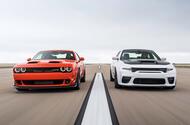
Both the Challenger and the Charger absolutely galvanise anyone under the age of 20We convene two Scat Pack Dodges in Hells Gate, Canada, to give the V8 muscle car icons a suitably sizzling send-off
It’s hazy at Hells Gate, and the smoke stings your eyes.Â
A few miles to the north, an out-of-control wildfire has caused a road closure, turning this narrow two-lane canyon road into a suddenly empty spur to nowhere, free from traffic.
Contemplating the big Dodge Challenger sitting on the shoulder with the smell of burning timber hanging in the air, it’s not hard to see why the era of this sort of combustion-powered guilty pleasure is drawing to a close.
For 15 years, this huge coupé has represented moonshine-grade distilled nostalgia for a time that was shorter than everyone seems to remember. The original model was introduced in the autumn of 1969 and was dead in just four years, killed off by the meteor impacts of 1970s fuel crises.
Now, the modern V8-powered Challenger has reached its own vanishing point. Even for the British, who, the occasional grey import aside, have had to look enviously across the pond at American muscle cars, there’s likely to be a sense of loss.

The formerly closely related Dodge Charger will soldier on as either an electric car or powered by a twin-turbocharged straight-six petrol engine. It will now also be available as a saloon or a coupé, taking over the two-door muscle car duties from the Challenger. But from here on, that muscle will theoretically have a smaller footprint – no more thundering V8s of ludicrous displacement and power.
Sensible. A necessary evolution. No more dinosaurs. And yet… The road through British Columbia’s Fraser Valley is empty, there’s a six-speed manual attached to that whacking great V8 and the meaty tyres of this car appear to be bursting out of its bodywork like The Incredible Hulk splitting his trousers. The future beckons – but not before one more thundering visit to the past.
How does the Challenger handle?
Further downstream, the Fraser River turns silty and broad, its middle-aged spread creating fertile flood plains and happy farmers. Up here, it’s in its vigorous youth, the white-water torrent that gave this narrow passage the name of Hells Gate.
To carve a path alongside the river, this road’s engineers bored seven tunnels of varying lengths into the rock, each one a waiting echo chamber. That will be windows down, then.
Rev-match a downshift and stomp on the throttle and the Challenger does its powerboat party piece with aplomb, its big nose lifting. This one is equipped with a Shaker hood, a blister poking through the bonnet that visibly shakes under engine torque. Why? Because it’s funny.
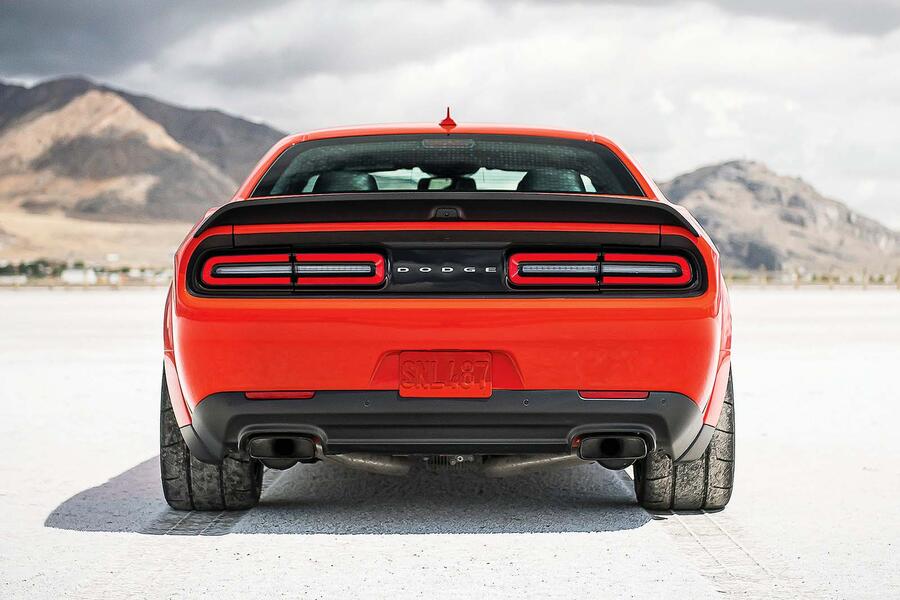
Rocketing out of a narrow tunnel in a cloud of loud and angry V8 noises feels like being shot out of a rifle. The road swoops and rolls alongside the channel cut by the river, smooth and without the kind of tight angles you might get in the California hills. It suits the Challenger.
In the words of Futurama’s Zapp Brannigan, the Challenger is built like a steakhouse but handles like a bistro. It’s far from light on its feet, but there is prodigious grip to be had.
The massive weight can be felt everywhere, but this wheel-and-tyre package was designed to tame the much more powerful supercharged Hellcat versions, so there’s a surprising balance to it. It’s a slugger, but more a well-weighted baseball bat than a two-by-four with a nail hammered through it.
The shift action for the six-speed manual is pure steakhouse again, feeling like one of those comedy-sized wooden-handled knives that big American chains love so much. It takes effort, and arguably the eight-speed automatic is a better fit for this car’s character. But a well-timed shift up to third followed by a wave of torque is incredibly satisfying.
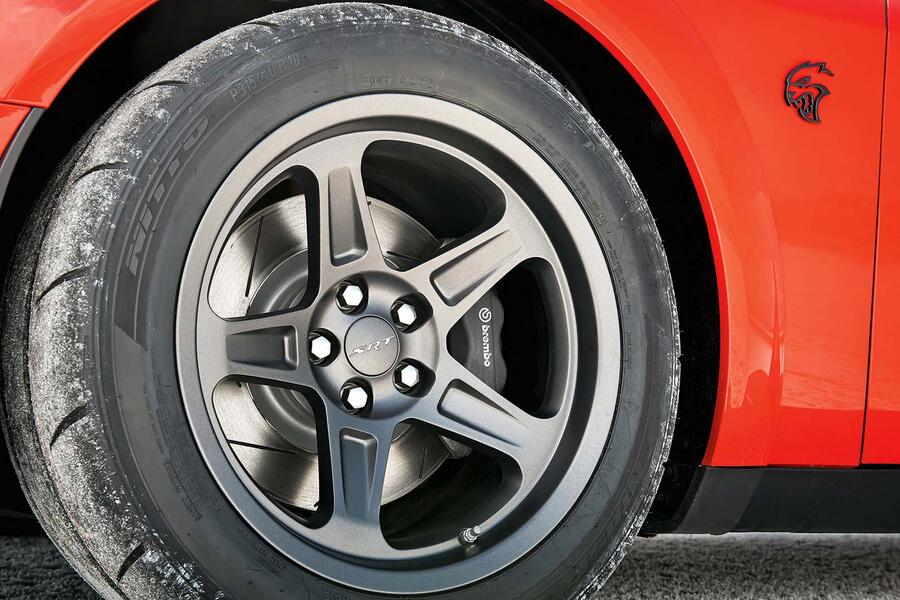
The steering is as numb as you’d expect with those steamroller tyres, but then you could level that same complaint at many modern BMWs. Compared with actual 1970s muscle cars, with their pool-noodle steering columns, the big Dodge does what you ask and doesn’t wander on its leash.
Essentially, the Challenger is a professional wrestler with a steering wheel. Something like a Porsche 911, that’s your Greco-Roman Olympic athlete, grace and grip. The Challenger is cartoonish in several dimensions, but it ladles out the charisma by the bucket, flexing and grimacing and putting on a show.
You otherwise only get this level of theatre from a supercar, and there’s something standoffish about those. In the Challenger, everyone wants to be your friend.
The history of the Charger Hellcat
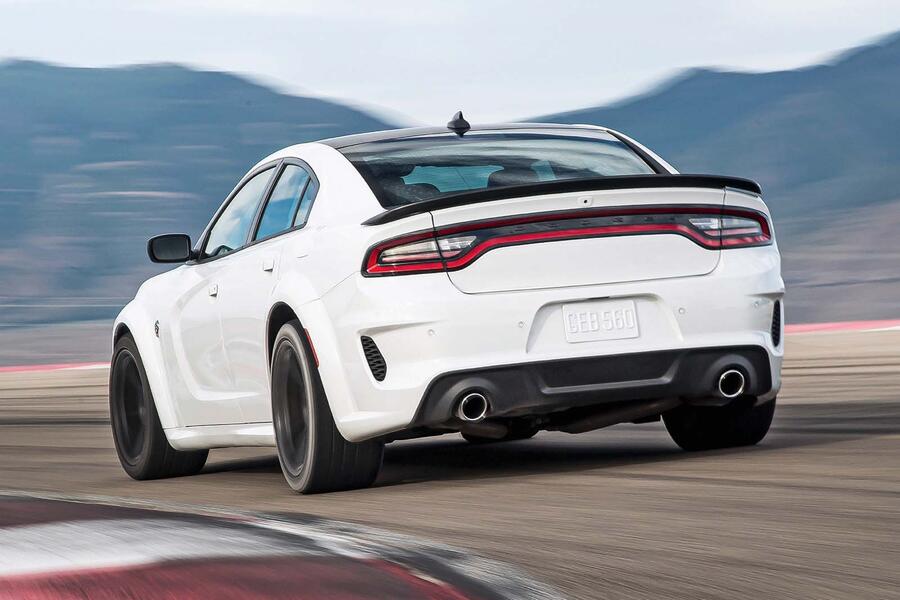
We will cross over to the Charger shortly but, first, no discussion of the modern incarnation of Dodge can overlook its most demonic works. Introduced a decade ago for both the Challenger and Charger, the Hellcat engine replaced an already potent 6.4-litre V8 with a new top-of-the-range supercharged 6.2-litre engine good for a ludicrous 697bhp.
Other, more potent special editions such as the Redeye and Demon would emerge, but the Hellcat is the one that everyone will remember.
Despite the fact that every Charger and Challenger Hellcat was bolted together in a Canadian plant 40 minutes away from the centre of Toronto, the Hellcat has become an American icon.
First, there was the unflinching straight-line speed of the thing; Ford and Chevrolet turned long-time rivals Mustang and Camaro from pony cars into thoroughbreds, but the Hellcat remained halfway between a Clydesdale and a Saturn V moon rocket.
Almost immediately, people started stealing them. To date, the Charger Hellcat is 60 times more likely to be stolen than any other car on the road in the US. They are nicked, chopped up and sold for parts.
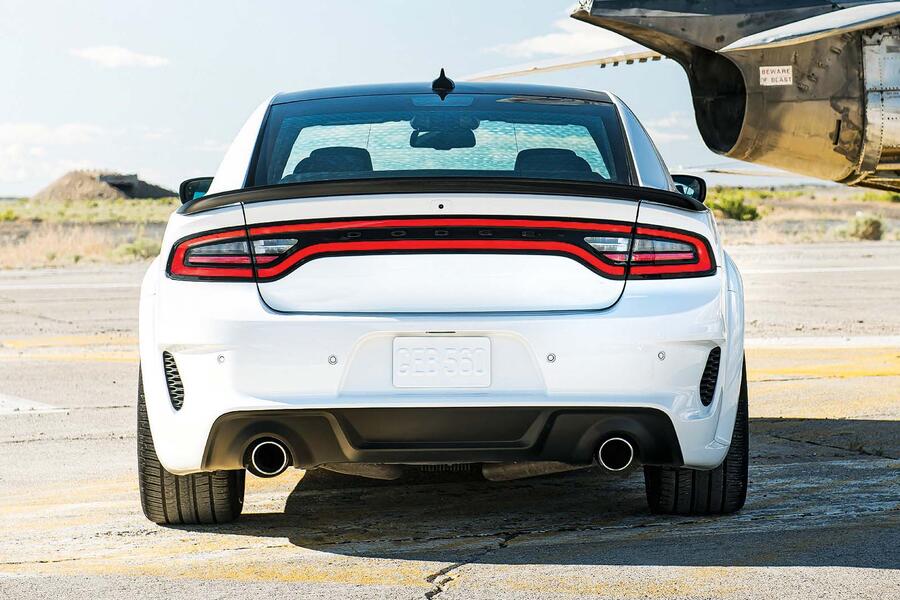
At the same time, the Charger Hellcat became a cultural icon. Perhaps no other car is mentioned as frequently in modern rap music, having long surpassed the Cadillac Escalade SUV. And as the ultimate rear-wheel-drive burnout machine, the Charger Hellcat is the poster car for so-called sideshows, when crowds shut down city streets and drivers perform dangerous stunts.
Despite this outlaw image, the cars retain their charisma. They are also peerless for the kind of continent-crossing interstate travel that defines the American road trip. I once drove 2000 miles in two days in a Challenger Hellcat, up through the Canadian Rockies into Montana, and it was like driving the world’s fastest couch. Plus, anytime I stopped for food or fuel, strangers would come over to chat about the car, reminiscing of childhood Mopar dreams.
A Lamborghini Huracán might be the stuff of lottery wins, but everyone can see themselves behind the wheel of a Hellcat.
What about the Charger?
![]()
Nowhere near as immediately appealing as the Challenger, the Charger was always going to be the last big Dodge left standing. When it emerged as a four-door cousin to the Challenger, Mopar fans were madder than the time Warner Bros took the confederate flag off the roof of the General Lee.
But the Charger was one of the last few cars you could buy that felt authentic to the old-fashioned full-size American saloon experience. They weren’t quite big enough inside to be actually full-size (the Ford Crown Victoria made a better police patrol car), but the rear-drive architecture and variety of powertrains brought the flavour of Hazzard County to the masses.
Which other car spanned such a breadth of choice? Show up at your average rental car counter and you’d drive away in a bare-bones V6 Charger with tiny alloy wheels. Or factory-order a Charger Hellcat and you’d have an automatic transmission, a roomy back seat and trunk and a top speed of 203mph. If Prohibition reared its head again, the home distillers would be running ’shine in Chargers in a heartbeat.
This one is a limited-edition Last Call 392 Super Bee, with the same 6.4-litre V8 as the Challenger. It leaves off the widebody but is hardly discreet, with drag-racing-style bonnet pins and a show-off graphics package. The little bumblebee doing a burnout is a nice touch.
The Charger doesn’t really hide those rental car roots and shows its age more than the Challenger. It is, however, a better-resolved chassis, and there is a certain satisfaction in knowing that you spent nearly every single dollar on as much motor as possible. The automatic transmission and gutsy torque make for unexpectedly smooth operation, but just a touch more throttle input and the Charger growls a warning. It’s still a brute.
What lessons can be learned for the future?

As they thunder into retirement, the lasting impact of these Dodges fills the windscreen ahead. Yes, they were deliberate throwbacks right from the very development process, but there are lessons here that can be carried forward to the electric future.
A Ford Mustang or Chevrolet Camaro may disappear around a corner, but the appeal of the Challenger and Charger wasn’t only in performance. It lay in the experience, the sound and the fury and also the slight silliness. There was a joy to them that more serious-minded folks might mock, but they did so at their loss.
Dodge also offered something that many other manufacturers have retreated on: choice. Available in a riot of colours, with a huge variety of engines, both the Charger and Challenger were the psychedelic antidote to the 50 shades of grey that is now your local Audi dealer. In the future, if there’s one company that’s going to sell you a massive purple electric coupé, it will be Dodge.
The thunder of V8s recedes into the distance. An era of muscle car nostalgia draws to a close. But as the Brampton Assembly Plant tools up to build the next generation of Charger, it’s worth noting that well over two million Challengers and Chargers passed out of its doors and into the world. There may be no new V8 Dodges being built any more – and yet still they live.
By Brendan McAleer
